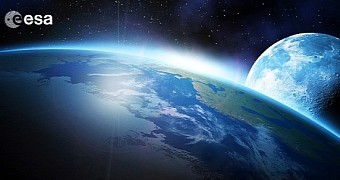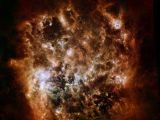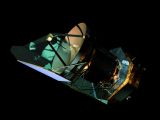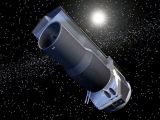In a fit of nostalgia, European Space Agency astronomers found themselves gazing once more at a positively gorgeous view of a nearby galaxy that the Herschel Space Observatory and the Spitzer Space Telescope delivered quite a while back, in 2012.
The image, included in the gallery below, shows the irregularly shaped Large Magellanic Cloud. This galaxy sits at a distance of just 163,000 light-years from us and astronomers refer to it as a satellite of our Milky Way.
What they mean is that, just like the planets in our Solar System circle the Sun and are kept in place by gravitational forces, so does the Large Magellanic Cloud orbit the Milky Way as a result of its being gravitationally attracted to it.
The Large Magellanic Cloud is a rather chaotic place
European Space Agency astronomers describe this nearby galaxy as a ginormous clump of stars, gas and dust. They add that, what with all the turbulence going on deep inside it and the insanely hot temperatures characteristic of star-forming regions, the galaxy resembles the deep core of a volcano.
“A scene of jagged fiery peaks, turbulent magma-like clouds and fiercely hot bursts of bright light. Although this may be reminiscent of a raging fire or the heart of a volcano, it actually shows a cold cosmic clump of gas, dust and stars,” reads the image's description.
In this stunning view obtained with the help of the Herschel Space Observatory and the Spitzer Space Telescope, the orange represents build-ups of murky dust. The almost unnoticeable deep red and green areas show the distribution of cool dust, and the white and blue represent hot star-forming areas.
The galaxy is home to a nebula resembling a tarantula
One other fascinating space image, also included in the gallery below, shows an oddly shaped nebula in the Large Magellanic Cloud that kind of, sort of looks like a pretty scary cosmic tarantula. Hence its (not very imaginative) moniker: the Tarantula Nebula.
The nebula, essentially a big cloud of thick dust and gas sprinkled with star clusters, is observable towards the lower left of the frame in the larger view of the Large Magellanic Cloud. It's easy to identify it because it is the image's brightest region.
The image of the Large Magellanic Cloud's Tarantula Nebula that is available in the gallery was produce by the Hubble Space Telescope and shows the cloud of dust, gas and stars in infrared light, European Space Agency astronomers explain.

 14 DAY TRIAL //
14 DAY TRIAL // 




